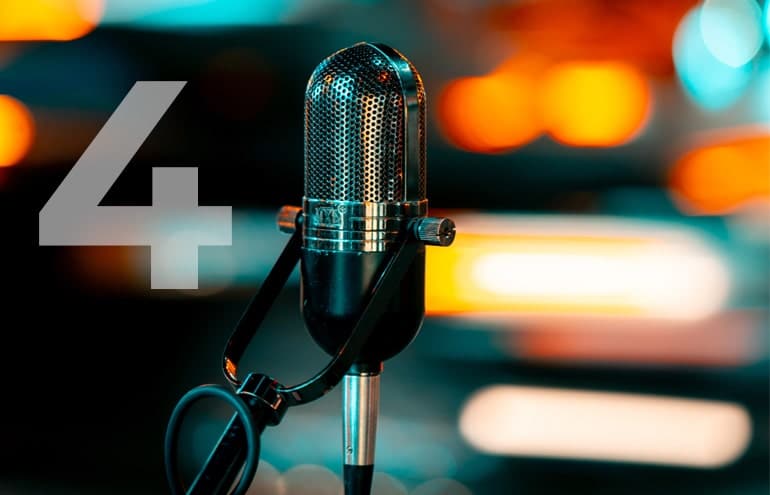Lawyers have long sought speaking opportunities to display their expertise and market their practices. To present a subject effectively, you need to differentiate and optimize these four presentation components: the speaker, the course materials, the visual (i.e., the PowerPoint) and the notes.

Table of contents
You
You can’t have a speech without a speaker. You, the speaker, are the most important component of any presentation. The other components complement what the speaker is doing; they should not be a substitute for the speaker. If one or more of the other components is missing (and sometimes a glitch makes that happen), the speaker should be able to carry on. But none of the other components constitutes a presentation.
Course Materials
Every state’s CLE accrediting board requires “substantive course materials.” Unless the sponsor is an accredited continuing provider and therefore all their programs qualify for CLE credit, the materials must be submitted as part of the application to accredit the program.
The course materials can be written like a textbook or as an outline. Course materials often include citations and perhaps lengthy quotation of statutes or opinions. For a virtual presentation, the email that provides the log-on link should include a link to download the materials. For in-person presentations, registered attendees may receive the materials digitally in advance or at the presentation.
Materials should not reference an issue without providing the answer. For example, merely mentioning “accidental discovery disclosure” as a topic is insufficient. The materials should include discussion or subheadings that detail the duties of the discloser and the recipient of the disclosure.
“Substantive course materials” means that someone can pick up those materials a year later to look up an issue that the speaker addressed and benefit from having received those materials, whether or not the person actually attended. An attendee should not have to rely on their own notes or feel the need to contact the speaker to be reminded of what the speaker said.
Use the same approach with other audiences: industry or trade groups, chambers of commerce and so on. Provide attendees with information to take away from the presentation that they can consult or share long after your program.
PowerPoint
The effective use of PowerPoint differentiates the good speakers from the boring ones. Yes, a visual reinforces what the speaker is saying and helps hold an audience’s attention. But a PowerPoint should never be a series of slides with nothing but words that the speaker reads aloud.
Your audience can read. Do not read to them. You are giving this speech because you are supposed to be an expert on the topic. Experts can knowledgeably talk about their subject without reading text.
Instead of words on a screen, use pictures that evoke the topic. Pictures that surprise the audience and show your sense of humor can elevate your presentation from the humdrum to an audience sensation.
What if you want to break down a specific excerpt? Bring up a slide with the excerpt, and tell your audience, “I want to talk about this now, so I’ll give you a minute or two to read it.” Then be quiet. After a couple of minutes, start analyzing what the audience has just read, but do not read it to them, for example, “What did the court mean when it used that term in this context?”
The ubiquity of PowerPoint has led some speakers to submit their PowerPoint as their course materials. Don’t. The result is insufficiently detailed course materials and an overly detailed visual. And it bores the audience.
Notes
You should rehearse your presentation multiple times before the big day so you know it inside and out. Use notes to remind yourself of the points you are afraid you might otherwise forget. You can use index cards (I use the 5 x 8 ones) or paper. For a one-hour presentation, three index cards should be sufficient.
Don’t count on accessing your notes digitally. Your PowerPoint has a place for notes on each slide, but you won’t be able to see them when you are in SlideShow mode. If you keep your notes on your computer but can’t access the machine for some reason, you may be left adrift.
Never, never, never read your notes to the audience. The PowerPoint is not your notes. But you might want to sync your spoken words to the right slide by printing out the slides, maybe four or six to a page, and writing your notes next to the related slide.
The course materials are not your notes. You could print out your course materials and highlight the keywords you want to hit. Because course materials are usually fairly long and densely written, that may be cumbersome.
Because notes serve as reminders, it’s best not to write full sentences, but merely the words that trigger your memory.
The Big Takeaway
Polished speakers get invited over and over. You may be the biggest expert in the country on a topic, but if you put your audiences to sleep, the evaluations will reflect their displeasure.
The most important rule to giving good presentations, and the one most often ignored, is to simply talk to your audience; and never read to them.
For more marketing tips, read Teddy Snyder’s new book, “Women Rainmakers’ Best Marketing Tips, 4th Edition” (American Bar Association, 2021).
More Tips for Polished Presentations
- “On Deck: Pro Tips for More Masterful Presentations”
- “Public Speaking Tips to Empower Your Next Presentation”
- “Seven Public Speaking Tips for Videoconferences”
Subscribe to Attorney at Work
Get really good ideas every day for your law practice: Subscribe to the Daily Dispatch (it’s free). Follow us on Twitter @attnyatwork.
















